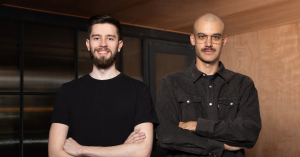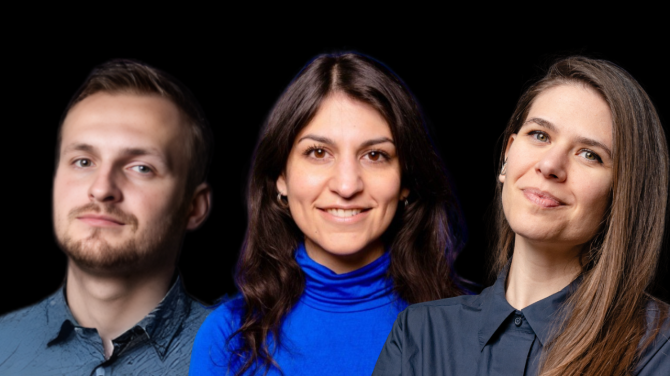Over the past five years, I’ve worked on designing MVPs, consulted and observed many people on their MVP journeys. What I see again and again is founders not thinking through their idea enough before jumping straight into implementation. This hands-on, action-driven approach can be great — it helps them move fast and bring ideas to life. However, it’s often not enough.
By doing this, they run into the same mistakes over and over again and don’t know how to move past them. They quickly realize they don’t have the time, knowledge, or direction to properly validate their product. They search for a structured approach — only to say, “I wish I had known this earlier” when they finally get out of chaos.
To help new founders avoid these words, I’ve gathered insights from my own experience and colleagues across different product roles. Here are five main don’ts that can save time and money while building an MVP.
Don’t be reluctant to niche down
One of the biggest mistakes I see founders make is coming to me excited, saying, “I have 5 different audiences I want to serve with this product!” But the main issue is that when you try to solve a problem for everyone, you often end up solving it superficially — because not many people share the exact same problem in the same way.
My colleague Serhii Mariekha, who helps founders generate ideas and build MVPs from a technical standpoint, recommends looking for a micro-niche with SEO tools. He believes in starting with your own problem and then checking if others share it. Here’s how he does it:
“When you already have hypothetical pain points, you can check if others share the same problems. SEO tools like Ahrefs can help you find the right keywords and identify those pains.
Type in the keywords that are associated with your product idea. You’ll see that some keywords are highly competitive, so probably you won’t be able to succeed with that idea.”
“Instead, look for a micro-niche you can dominate — something like Canva did early on. They created simple tools for small problems, like resizing images, and linked back to their main product. This allowed them to build an audience and scale. I use the same approach when exploring new ideas”, says Serhii.
Don’t make it perfect
This may seem counterintuitive, especially after mentioning that many founders jump into building their ideas without validating them first. But I didn’t mean you should avoid taking action, rather — avoid taking unnecessary action. Many founders want to start making money right away, which is totally valid; after all, businesses are meant to make money. However, with startups, sometimes you need to give things time to develop.
Founders often try to fit every feature into their MVP, making it perfect. It feels like they’re trying to read minds instead of asking for audience validation and then iterating from there. The better approach is to build the minimum product that solves the problem, share it, and get feedback before building more.
Maksim Siadura, a strategist who works with AI/ML startups, says he guides his clients to identify the absolute minimum functionality needed to validate their core business hypothesis. “This means determining which single feature will prove the value of the model, a particular challenge for AI startups, which often want to build complex automation before validating the underlying problem.”
“A true MVP should look rough around the edges, a working prototype, not a polished mini-product. This is especially critical in AI, where the pursuit of perfection can lead to months of model training without customer validation”, says Maksim.
Don’t be afraid to find validation shortcuts
Another common misconception I see among new founders is that validation is a long and painful process. But it doesn’t have to be.
Serhii Mariekha says that modern tools allow you to do things without even writing a code.
“You can quickly validate whether you should gather investment. There’s no need to overthink or create complex features just to test an idea and attract a specific group of people. It’s all about keeping things simple. Take server queues, for example, or distributed task execution. It’s a technology available in AWS, but it’s much cheaper than larger internet systems”, he says.
Maksim also points out that a lot of startups he starts to work with don’t even know they can do no-code things like:
- Creating landing pages with manual fulfillment behind the scenes.
By designing landing pages that describe a product or service, you can gauge interest and collect sign-ups. Behind the scenes, you can do orders manually, while testing the market’s reaction without building out the full system.
- Using “Wizard of Oz” testing where humans perform what will eventually be automated.
This technique involves simulating an automated process and having humans perform the tasks that will eventually be automated. It gives insights into the user experience and helps test the idea’s viability before committing to full-scale automation.
- For the AI startups: building simple templated solutions (e.g., Google Docs + manual processing) that mimic AI functionality.
Instead of building complex AI solutions right away, you can create simple, low-cost alternatives using tools like Google Docs, where manual processing mimics the functionality of the desired AI system. This allows you to test the concept and gather user feedback quickly, ensuring there’s demand before investing heavily in development.
It’s important to remember that seeking shortcuts isn’t a weakness — it’s a smart approach. They aren’t about taking the easy way out; they’re about working efficiently, gathering data faster, and ensuring that what you’re building has real potential.
Don’t be too attached to the solution
Founders usually think they really understand their customers, but in reality, they often don’t. They interpret their customers’ words through their own biases, which can distort their understanding and lead to false solutions. Those biases often come from attaching to the solution. And no wonder, you worked on something really hard.
However, the hard truth is sometimes you don’t have to fit your customer to the idea you have, you have to fit the idea to the customers.
To see the real picture, I usually guide my clients to approach things from a less emotional standpoint. Ask yourself: am I in love with the idea or in love with the solution? If the latter, shift their focus to fall in love with the problem instead. The product will go through many iterations, but the problem remains constant.
My colleague Maxim has also pointed out that users themselves often don’t fully understand their needs. For instance, they often request features based on how they see AI (influenced by media hype) rather than their actual needs. So, to see the picture more clearly, here’s what he recommends.
“You need to filter the signal from the noise, focusing on feedback about the problem rather than proposed solutions. Listening to the wrong users leads to building sophisticated features that no one needs”, is what Maxim recommends.
Building an MVP is not just about executing an idea; it’s about making the right decisions along the way. Don’t spread too wide; a niche focus leads to real solutions. Don’t chase perfection; validation matters more than features. Don’t get attached; your product will evolve, but the problem will remain.
By avoiding these common mistakes, you’ll save time, money, and frustration. Fall in love with the problem, test your assumptions early, and stay flexible. The best MVPs don’t start perfect, they start smart.









